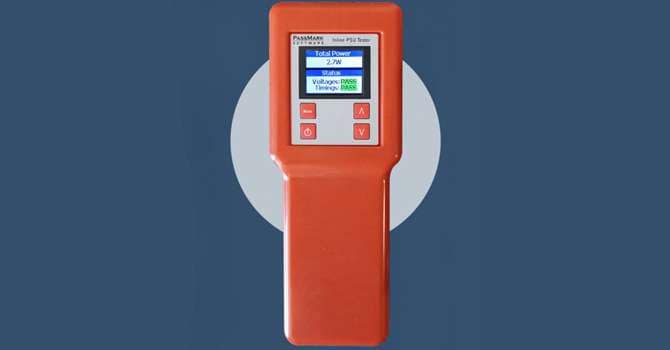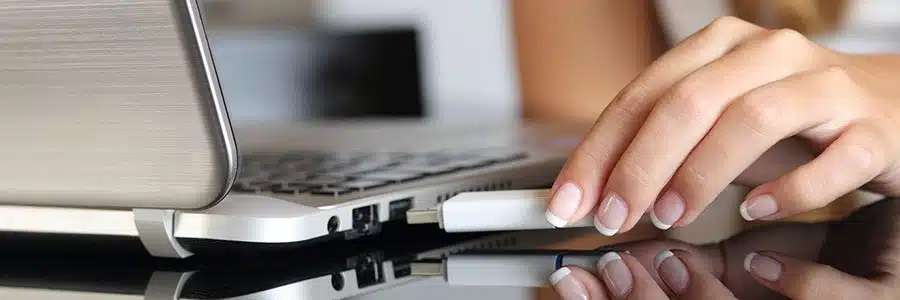BIOS is among the most useful parts of your computer experience since you can change the settings, improve your performance, or give your device a fresh start. You may have wanted to achieve some of the abovementioned goals, but your computer doesn't boot to BIOS. If you've recently encountered such issues, we're here to help.
We'll name a couple of reasons why your computer won't boot to BIOS and teach you how to resolve each issue. We'll also mention a process you must perform before fixing the problem for the smoothest experience.
In this article
Reasons Why Your PC Won't Boot to BIOS
We'll present the most common reasons in the table below, followed by corresponding solutions to help you navigate the journey better and discover the ideal fix.
| Issue | Explanation | Solution |
| Connectivity and power concerns | If your monitor isn't connected correctly, or your device doesn't receive enough power, it won't display BIOS. | Check the connections and power |
| Damaged hardware | Some of your components may be damaged, interfering with BIOS. | Check for faulty hardware |
| Connected peripherals | USBs and other peripherals may disrupt the BIOS startup process. | Disconnect all peripherals |
| CMOS bugs | If CMOS experiences issues and random bugs, you may be unable to boot your computer into BIOS. | Reset CMOS |
| Keyboard issues | You may be unable to enter BIOS if your keyboard isn't working properly. | Change to UEFI firmware settings. |
| Outdated BIOS version | Your BIOS may be outdated, preventing you from entering it on your computer. | Update BIOS |
| Outdated operating system | If you're using an outdated operating system version, your device may experience bugs and lags preventing you from entering the BIOS. | Update your operating system |
| Operating system and software issues | If you experience other issues with your device, it may be a sign of a faulty OS version or other software concerns. | Reinstall your operating system |
Video Guide: How to Enter BIOS | Fix Can't Get into BIOS
More Details: How to Fix a PC That's Not Booting to BIOS
Method 1: Check Connections and Power
First, you should check whether your monitor is connected to the PC and whether the cables aren't damaged. That may lead to connectivity issues, causing your computer to avoid booting in BIOS. You should also check your power supply using PSU testers or similar solutions.

Using other devices is one of the best methods to check the connections and power. For instance, if you have a spare working monitor, you can connect it to the PC and determine where the problem stems from.
Method 2: Check for Faulty Hardware
If some of your components experienced physical damage, your computer won't boot into BIOS. One of the first components you should check is the RAM since it may not be able to support the abovementioned action.
Remove all the suspicious components from your device, clean them up carefully, and put them back. Turn on your computer again and try booting into BIOS to check whether the hardware is causing the issue.

Method 3: Remove All Non-essential Peripherals
As mentioned, peripherals may impact the performance of your device and prevent it from booting into BIOS. For instance, if you have a USB flash drive plugged in, the computer may get "confused" and try to boot from this external device. We advise you to remove all unnecessary peripherals and keep only the essential ones (keyboard and mouse) plugged in.

Method 4: Reset CMOS
CMOS (Complementary Metal-Oxide-Semiconductor) is a small device that stores your BIOS settings and makes it run smoothly. If CMOS is problematic, you may want to reset it to get your BIOS to boot on your computer. Different motherboards and devices will have different reset methods, but the one that's the most universal will be presented below:
- Turn off your device and unplug it from power.
- Press the power button a couple of times.
- Next, open the device and locate the CMOS battery. It's a coin-sized battery, as presented in the image below.
- Remove the battery gently.

- Wait a few seconds and put the battery back.
After completing these steps, power on your PC and see whether it resolves the computer won't boot to BIOS issue.
Method 5: Change to UEFI Firmware Settings
If the keys on your keyboard aren't working, your PC won't boot to BIOS successfully. Instead, you can boot using only your mouse, and we'll present a detailed guide on how to do it below:
- Open Settings on your device.

- Head to Update & Security.

- Tap the Recovery option from the left bar.
- Next, click on Advanced Startup and select Restart Now.

- In the next window, click on Troubleshoot.

- Head to Advanced Options.

- Click on UEFI Firmware Settings.

- Click the Restart option.

After completing these steps, your device will boot into BIOS without using your keyboard. If the issue persists, try other methods mentioned in this guide.
Method 6: Update BIOS
Using an outdated BIOS version can lead to issues like slower performance or inability to boot your computer to BIOS. Updating BIOS occasionally is crucial for your computer's well-being, so you should do it whenever it crosses your mind.
The guide differs depending on the motherboard you're using. We'll present a guide for MSI motherboards to give you insight into the updating experience.
- Head to the official MSI website and search for your motherboard.

- Click on the Download button.

- On the next page, click on the arrow next to the newer BIOS version.

- After downloading, right-click on the file and select Extract All.

- Click the Extract button from the pop-up window.

- Copy the file and paste it to a USB flash drive.

- Restart your device while pressing the Del key.
- Select M-Flash from the menu.

- Choose the USB with the updated BIOS.

- Select Yes to start updating.

Your device will restart, and you can open your BIOS.
Method 7: Update Your OS
Using an outdated operating system version may lead to bugs and lags, such as your PC not booting to BIOS. You should update the system when you get the notification or notice something's wrong with your device. Here's how to do it:
- Click on the Windows button and head to Settings.

- Next, open Update and Security.

- Click on Windows Update.
- Press the Install Now button.

As soon as you press the button, the updating process will begin. Your device will automatically restart, and you can try entering your BIOS afterward.
Method 8: Reinstall Your OS
Reinstalling your operating system will freshen up your desktop device and make it as good as new. You can perform this action in numerous ways, such as creating a bootable drive, but we'll present the most beginner-friendly option available.
This method will make all your settings default and allow you to access your BIOS. We must note that reinstalling your Windows operating system will affect your data, so we advise you to check out the bonus tip belowbefore proceeding to the installation. Without further ado, let's jump to the guide.
- Open Settings on your device.

- Head to Update and Security.

- Click on Recovery.
- Choose Get Started under Reset this PC.

- Select whether you want to save your files or remove everything, as presented in the image below.

- After this, click the Reset button to get started.

The process may take a few minutes, so don't power off your device.
Tips: Make Sure to Recover Your Data Before Trying These Fixes
Some solutions for BIOS not showing up mentioned above, like reinstalling your Windows operating system or physical hardware damage, will delete everything from your device, so you must recover your valuables and store them in a secure location. That will prevent further issues and stressful scenarios, so do not skip this step.
The best way to ensure all your data will be extracted and recovered is to use third-party software solutions like Wondershare Recoverit. This tool has the industry's most advanced algorithms and scanning mechanisms and provides a 99.5% success rate.
The company has been in the recovery market for over two decades and has over 35 patented technologies, proving its reliability and success. Wondershare Recoverit has more than 20 years of history in the recovery field and utilizes some of the most advanced security and privacy systems, keeping your sensitive information protected during the process. You can retrieve all file types from all loss scenarios and prepare yourself for fixing the BIOS not booting up issue.
All you have to do is head to the official Wondershare Recoverit website, download the tool to your device, and follow these steps to preserve your valuables:
- Open Wondershare Recoverit and click on the Hard Drives and Locations option.
- Click on the location you want to scan from the available options.

- As soon as you select the location, the program will start scanning. You can pause the process and view the progress in the next window.

- After scanning, preview the files and select the ones you wish to save. Click the Recover button.

- Choose where to save the files.

Conclusion
Not being able to boot your computer into BIOS may be stressful, especially if you haven't encountered such issues before. We've prepared solutions for all possible scenarios to help you navigate the journey. We've covered software and hardware aspects so you can discover the ideal fix and get BIOS up and running again.
Recovering your data before fixing the "computer won't boot to BIOS" issue is crucial since some solutions may lead to data loss. We advise you to check out Wondershare Recoverit and extract all your files in one go.
Try Wondershare Recoverit to Restore Vital Data

FAQ
-
Why is my PC not booting to BIOS?
The problems aren't significant in most cases, and you shouldn't worry about your device's well-being. For instance, it's common for the CMOS battery to be making an issue, or you need to update your operating system or BIOS.
Some other cases include physical hardware damage and connectivity issues. If your hardware is severely damaged, you may need to contact professionals. -
How do I force my computer to reboot to BIOS?
The easiest way to do so is by following these steps:
1. Head to Command Prompt and select Run as Administrator.
2. Type the shutdown /r /fw command and press Enter.
Once you complete these steps, the computer will automatically boot into BIOS. -
Can BIOS update affect my data?
BIOS updates usually won't affect your data. However, things may sometimes go downhill. For instance, if the downloading process is interrupted, it may lead to data loss. In such scenarios, we advise you to be careful and have a recovery solution like Wondershare Recoverit in case of emergencies. -
What to do if my F1/F2 keys are stuck and I cannot enter BIOS?
If your keyboard is causing the issue with your computer not booting into BIOS, you can follow these steps:
1. Open Settings and head to Update and Security.
2. Click on Recovery and head to Restart Now under Advanced Setup.
3. Head to Troubleshoot > Advanced Options.
4. Select UEFI Firmware Settings.
5. Click the Restart button.
After this, your computer will automatically boot into BIOS.


 ChatGPT
ChatGPT
 Perplexity
Perplexity
 Google AI Mode
Google AI Mode
 Grok
Grok























